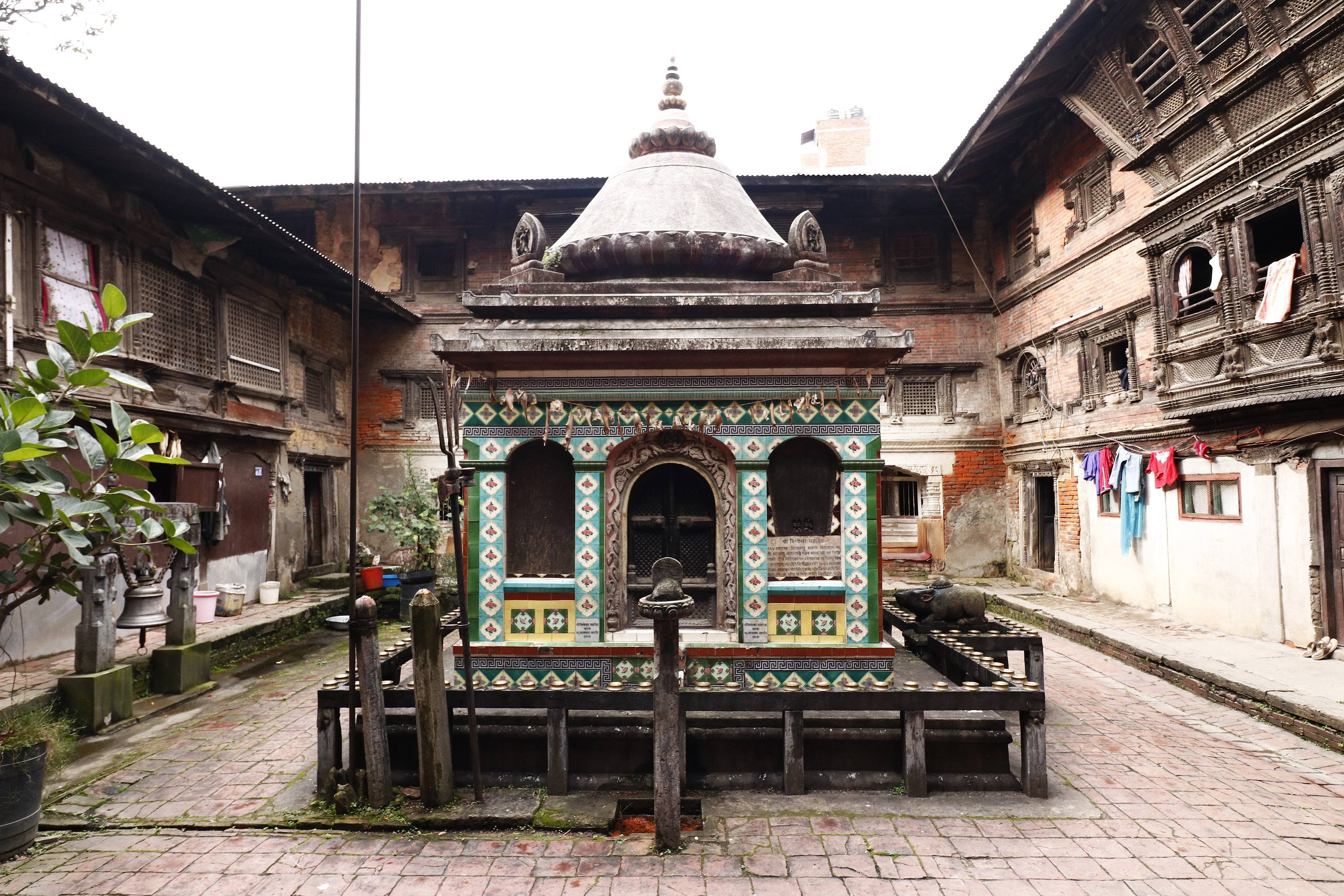Chāy Bāhāḥ Maṭha, Patan
Curated by Rajan Khatiwoda and Ravi Shakya

Chāy Bāhāḥ Maṭha (LAL0751) is one of the five monastic buildings in Patan that belong to the Daśanāmī ascetics. The other four include Calkhu Maṭha, Bāhālukhā Maṭha, Tuilākva Maṭha and Tum Bāhāḥ Matḥa. These maṭhas have a direct connection to the ascetic orders set by Śaṅkarācārya, a renowned ascetic and philosopher, who is credited to have started the maṭha tradition in India in the 8th century.
Śaṅkarācārya was influenced by the Shaiva ascetics who did not believe in the caste system and lived in hermitage. After his philosophy and knowledge earned him thousands of followers, he appointed four of his followers as his main disciples, established four maṭhas at four separate places in India, and appointed them as the chief of these four maṭhas. The four maṭhas are Jyotiṣpīṭha (Badrikāśrama) in the north, Śṛṃgerīpīṭha (Karnataka) in the south, Govardhanapīṭha (Purī) in the east, and Śāradāpīṭha (Dvārakā, Gujarat) in the west (cf. A. Tripāṭhī 2019, p. 35). He then appointed ten other followers as his disciples and sent them to assist the four main disciples. The post given to the ten ascetics went on to become the ten caste groups of the daśanāmī ascetics in India and Nepal. The ten caste groups are: Āśrama, Tīrtha, Vana, Araṇya, Girī, Parvata, Sāgara, Sarasvatī, Bhāratī, and Purī. The Chāya Bāhāḥ Maṭha is associated with the Śṛṃgerīpīṭha of Karnataka, which is run by the Sarasvatī, Bhāratī, and Purī caste groups of the daśanāmī ascetics. Although there are no historical sources to date the initial construction of the Chāy Bāhāḥ Maṭha, its architecture suggests that it was constructed in the late 17th century. The maṭhas constructed in the Newar settlements have a strong influence of the Newar culture and language, although such a monastic tradition evolved from Śaṅkarācārya’s philosophy. The medieval inscriptions at the Chāy Bāhāḥ Maṭha are also written in Newari. An inscription from 1748 CE (NS 868) reveals that Sitārāma Bhaṭṭa was the priest of the Maṭha at that time. Presently, a Rājopādhyāya (Newar priest) performs the daily and other rituals at the Maṭha.. However, a Khanāla Brahmin from Parvatīya origin performs the rituals related to any ascetic member’s death. The fact that the maṭha tradition flourished in Newar settings— which is dominated by Buddhists (in the case of Patan)—is a perfect example to describe the religious and social complexities and uniqueness of the Kathmandu Valley.
For more information about Chāy Bāhāḥ Maṭha, please visit DANAM.
